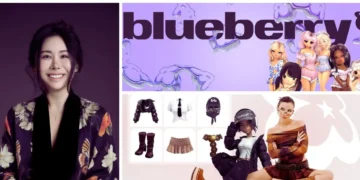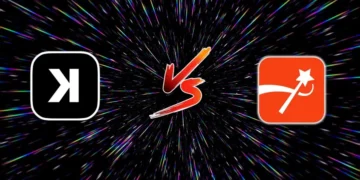What if the next iconic piece in your wardrobe never exists in physical form? Imagine attending fashion shows from your living room, trying on digital clothing that defies physics, or purchasing a virtual handbag that costs more than its tangible counterpart. This isn’t science fiction—it’s the reality of fashion in the metaverse, and it’s evolving from niche innovation to mainstream economic powerhouse.
The fusion of fashion and technology is creating entirely new paradigms for how we express identity, interact with brands, and conceptualize ownership. With the metaverse fashion market projected to reach staggering values—some estimates suggest $166.88 billion by 2035—the business of virtual style is no longer speculative but strategic . Major players from Nike to Gucci are making significant investments, while entirely new categories of digital fashion design are emerging.
But what’s driving this seismic shift? How are established fashion brands adapting, and what opportunities does this present for consumers and creators alike? More importantly, is this sustainable revolution or just another tech bubble? In this comprehensive exploration, we’ll unpack how digital fashion is reshaping the entire industry—from design and distribution to consumption and community—and why your virtual identity might soon become your most valuable fashion asset.
Understanding the Digital Fashion Market Size and Growth
The digital fashion market size was valued at approximately USD 2.91 billion in 2025 and is predicted to skyrocket to a staggering USD 147.5 billion by 2035, exhibiting an explosive CAGR of 167.54% over the decade. This phenomenal growth is fueled by widespread adoption of augmented reality (AR), virtual reality (VR), and blockchain-enabled technologies such as NFTs, which guarantee authenticity and ownership in virtual garments.
Luxury and lifestyle brands like Gucci, Prada, Adidas, and Nike have strategically entered this space, launching virtual collections and NFT fashion pieces generating millions in revenue. For instance, Dolce & Gabbana’s nine-piece NFT collection amassed $5.7 million, underscoring the lucrative potential of virtual couture.
Why Are Consumers Transitioning to Digital Fashion?
Digital fashion appeals for multiple compelling reasons:
Environmental Sustainability: Virtual clothing produces zero physical waste and requires no raw materials, aligning with consumer demand for eco-friendly alternatives.
Personalization and Creativity: The metaverse allows users to customize avatars with infinite styles that may be impossible in real life, encouraging bold and innovative designs.
Social Engagement: Younger generations, especially Gen Z and millennials, spend significant time online and view digital spaces as essential venues for self-expression and social connections.
Convenience: Digital wardrobe options including AR try-ons provide an immersive shopping experience without leaving home.
The Metaverse Fashion Market By the Numbers
Understanding the Scale of the Opportunity
The growth projections for the metaverse in fashion market are nothing short of extraordinary. Let’s examine the data that has industry leaders paying attention:
Table: Metaverse Fashion Market Growth Projections
| Source | 2024/2025 Base | 2032/2035 Projection | CAGR |
|---|---|---|---|
| Market Research Future | $6.09B (2024) | $166.88B (2035) | 35.11% |
| Fact View Research | $7.1B (2023) | $89.6B (2032) | 33% |
| 360iResearch | $26.3B (2025) | $198.7B (2032) | 33.45% |
These figures represent one of the fastest-growing segments in both the fashion and technology sectors. The metaverse fashion market isn’t just expanding; it’s accelerating as technologies mature and consumer adoption increases .
But beyond the impressive totals, where is this growth concentrated? Current data reveals fascinating segment trends:
Luxury fashion currently dominates market share, driven by high-value NFTs and exclusive digital collectibles
Sustainable fashion represents the fastest-growing segment as eco-conscious consumers seek alternatives to physical production
Digital try-ons command the largest share of user engagement types, while NFT fashion collectibles show the most rapid adoption growth
What do these numbers tell us about the future of your wardrobe? They suggest that virtual fashion is transitioning from experimental marketing to core revenue stream, with significant implications for how brands allocate resources and how consumers allocate spending.
The Key Drivers Fueling the Digital Fashion Revolution
Why Now? Understanding the Convergence of Trends
Several powerful forces have aligned to propel fashion in the metaverse from concept to commerce. Understanding these drivers helps explain why this shift is happening with such velocity—and why it’s likely to persist.
The Gamification of Fashion and Self-Expression
For younger demographics, particularly Gen Z and Alpha, digital spaces aren’t alternatives to reality but extensions of it. With reports indicating that Gen Z spends an average of eight hours daily on screens, the desire for self-expression has naturally migrated online . Digital clothing allows for identity exploration without physical constraints, while gaming platforms like Roblox and Fortnite have become unexpected but powerful fashion venues .
Consider this: Balenciaga’s collaboration with Fortnite introduced luxury aesthetics to millions of gamers who might never visit a physical boutique . Similarly, Gucci’s Garden experience on Roblox attracted 19 million visitors, demonstrating the massive engagement potential of these virtual environments . When your avatar serves as your representative across digital spaces, dressing it becomes as meaningful as dressing yourself.
The Allure of True Digital Ownership
The emergence of NFTs (non-fungible tokens) has revolutionized how we conceptualize ownership in digital spaces. These blockchain-verified assets provide authenticity and exclusivity—two qualities that have always driven value in the fashion industry .
Luxury brands have been particularly quick to capitalize on this potential. As of 2024, 21 of the top 50 global fashion brands had launched NFTs, with sportswear and luxury labels leading this digital transition . These aren’t just digital replicas but often include utility—access to exclusive experiences, communities, or physical counterparts.
Dolce & Gabbana’s “Collezione Genesi” NFT collection fetched nearly $6 million, while Nike’s acquisition of RTFKT Studios signaled serious commitment to the digital sneakers market . The psychological appeal is clear: in an increasingly digital world, owning rare digital items carries social currency comparable to physical luxury goods.
What Technologies Power Digital Fashion in the Metaverse?
The rise of digital fashion in the metaverse is propelled by several cutting-edge technologies:
Virtual Reality (VR) and Mixed Reality (MR) enable immersive virtual stores and fashion shows where users engage directly with brands.
NFTs and blockchain create a secure system for owning and trading digital fashion assets, ensuring exclusivity and authenticity.
Augmented Reality (AR) filters empower consumers to try on digital garments virtually, boosting confidence in online purchases and enhancing engagement on social media platforms.
How Are Brands Leveraging Digital Fashion for Growth?
Leading brands view digital fashion as a game-changer for marketing, sales, and brand loyalty. Here’s how:
Launching exclusive NFT drops generates buzz and new revenue streams.
Hosting virtual runway shows and interactive brand experiences in the metaverse attracts wider and more diverse audiences globally.
Utilizing AI-powered recommendations and personalized avatars enhances customer engagement and satisfaction.
Building strong online communities around shared interests fosters deeper brand-consumer relationships.
What Are Digital Fashion and Wearable NFTs?
Before we explore the “why” and the “how,” let’s get crystal clear on the “what.”
Digital fashion is the art and industry of creating clothing and accessories designed exclusively to be worn in digital environments. Think of it as couture for your online self. These aren’t just 2D images; they are often complex 3D files rigged to move and flow naturally on an avatar’s body.
Wearable NFTs (Non-Fungible Tokens) are the ownership and authentication layer for digital fashion. An NFT is a unique digital certificate of ownership stored on a blockchain, making it impossible to forge or duplicate. A wearable NFT is specifically designed to be equipped to an avatar in a compatible platform like Decentraland, The Sandbox, or Ready Player Me.
Key Features:
Interoperability: The holy grail of digital fashion is having items that can be worn across different virtual worlds and games.
Provable Scarcity: Because they are NFTs, creators can limit the number of items minted, creating rarity and exclusivity.
Programmability: These assets can have dynamic properties. Imagine a jacket that changes color based on the in-game weather or a pair of shoes that level up with your avatar.
Why Digital Fashion and NFTs Are Booming
The convergence of several powerful cultural and technological trends has created the perfect storm for this industry’s growth. It’s not just one thing—it’s a powerful combination.
1. The Metaverse Effect
The rise of immersive, persistent virtual worlds—the metaverse—has created a pressing need for digital identity. In these spaces, your avatar is your representative. Just as we use clothing to express ourselves in the physical world, people are seeking ways to customize their digital selves. This has created a massive new market for virtual goods, with fashion leading the charge. When you spend significant time in a virtual office, concert, or social space, what you “wear” matters.
2. Sustainability
The traditional fashion industry is one of the world’s largest polluters. The production of physical clothing consumes vast amounts of water and energy and contributes significantly to landfill waste. Digital fashion offers a guilt-free alternative for expressing creativity and experimenting with style. A study by the World Economic Forum highlights the urgent need for sustainable innovation in fashion, and digital garments produce virtually no physical waste. Does this mean you’d be willing to buy a digital-only outfit for a major online event?
3. Accessibility
High fashion has always been exclusive, with luxury brands catering to a small, affluent clientele. Digital fashion demolishes these barriers. For a fraction of the cost of a physical luxury item, anyone can own and wear a stunning digital garment from a renowned designer. This democratization of fashion allows for unprecedented creative expression for millions.
4. Investment Value
The NFT market, despite its volatility, has introduced a new paradigm of ownership. A wearable NFT from a sought-after collection, like those from RTFKT (now part of Nike), can appreciate in value, similar to a rare physical collectible. People are not just buying clothes; they are investing in digital assets with potential financial returns, turning fashion into a new asset class.
Top Examples of Digital Fashion and Wearable NFTs
Theory is great, but real-world examples make the concept stick. Here are some pioneers building the future of style right now:
The Fabricant: A leading digital-only fashion house that sold its “Iridescence” dress for $9,500 in 2019, establishing the high-value potential of digital couture.
RTFKT Studios: Acquired by Nike, RTFKT is a master of blending gaming culture, NFTs, and sneakerhead hype. Their virtual sneakers and avatar wearables regularly sell for thousands of dollars.
DressX: A massive digital fashion retailer offering ready-to-wear digital garments from various designers. You can upload a photo of yourself and “try on” your purchase, bridging the physical and digital gap.
Gucci & Balenciaga: Major luxury brands are all in. Gucci sold a digital version of its Dionysus bag on the Roblox platform for more than the physical bag’s price, and Balenciaga created an entire collection for Fortnite.
How Digital Fashion and Wearable NFTs Work
Curious about how to actually get started? The process is becoming more user-friendly by the day.
Design & Creation: Designers use 3D modeling software like CLO3D or Blender to create the garment, paying meticulous attention to how it moves and drapes.
Minting as an NFT: The final digital file is “minted” on a blockchain (like Ethereum or Polygon). This process creates the unique NFT and its certificate of ownership.
Acquisition: You purchase the wearable NFT from a primary marketplace (like the brand’s own site or OpenSea) or a secondary market.
Wearing It: In a supported platform (e.g., Decentraland), you connect your crypto wallet. Your owned wearable NFTs appear in your inventory, and you can simply click to equip them to your avatar.
Benefits of Digital Fashion and Wearable NFTs
The impact of this shift is being felt across the entire fashion ecosystem.
For Designers
Unlimited Creativity: Freedom from physical constraints like gravity and fabric properties allows for truly avant-garde creations.
New Revenue Streams: Royalties can be programmed into the NFT smart contract, ensuring designers earn a percentage every time their item is resold.
Direct-to-Avatar (D2A) Sales: They can build a direct relationship with their global customer base without traditional retail markups.
For Consumers
Radical Self-Expression: Your style is no longer limited by your body, budget, or the laws of physics.
True Digital Ownership: Unlike a rented skin in a game, your wearable NFT is an asset you truly own and control, which you can trade or sell.
Community & Status: Owning a rare item grants you access to exclusive communities and signifies status within digital societies.
For the Industry
Sustainability Driver: It provides a tangible path towards reducing the environmental footprint of the fashion industry.
Phygital Experiences: Brands are creating hybrid products. Buy a physical sneaker, and get an exclusive wearable NFT version for your avatar. This is the future of brand loyalty.
Prototyping & Waste Reduction: Brands can use digital samples to perfect designs before any physical material is cut, drastically reducing waste.
Challenges Facing Digital Fashion and NFTs
The road to a fully realized digital fashion economy isn’t without its bumps.
Technological Barriers: Interoperability remains a huge challenge. An item from Decentraland won’t work in Fortnite… yet. Standardizing file formats and systems is the industry’s next big hurdle.
Market Volatility: The NFT market is still young and can be highly speculative, which can deter more conservative brands and consumers.
Environmental Concerns: While digital items don’t create physical waste, some blockchains consume massive amounts of energy. However, the shift to more efficient “Proof-of-Stake” blockchains (like Polygon) is rapidly mitigating this issue.
Cultural Adoption: For many, the concept of paying real money for a “non-tangible” item still feels strange. Bridging this perception gap is key.
How Leading Fashion Brands Are Winning in the Metaverse
Case Studies of Successful Digital Fashion Integration
The brands seeing the greatest success in the metaverse fashion market aren’t merely dabbling—they’re developing comprehensive strategies that blend storytelling, technology, and community. Let’s examine some standout examples that illustrate different approaches to conquering this new frontier.
Table: Leading Metaverse Fashion Initiatives and Their Impact
| Brand | Initiative | Platform/Collaboration | Key Innovation |
|---|---|---|---|
| Gucci | Gucci Garden & Vault | Roblox | Digital collectibles & immersive storytelling |
| Balenciaga | Virtual Collection | Fortnite | Luxury skins in gaming ecosystems |
| Nike | RTFKT Acquisition | CloneX NFTs | Digital sneakers & avatar customization |
| Louis Vuitton | Louis: The Game | NFT collectible game | Gamified brand storytelling |
| Dolce & Gabbana | Collezione Genesi | NFT collection | Physical-digital hybrid couture |
Gucci: Blending Heritage with Digital Innovation
Gucci’s approach demonstrates how legacy brands can translate their aesthetic and values into virtual experiences. The Gucci Garden on Roblox wasn’t merely a digital storefront but an immersive environment where visitors could explore themed rooms, with each visit permanently changing their avatar’s appearance . This created both uniqueness and shareability—key drivers in digital spaces.
Meanwhile, Gucci Vault serves as a metaverse-native concept space that merges vintage pieces with NFTs and experimental digital collaborations . The strategy acknowledges that different segments of their audience engage with digital fashion differently—some seek collectibles, others seek experiences.
Nike: Strategic Acquisition and Community Building
Nike took a different approach by acquiring RTFKT Studios, a native digital fashion brand, rather than building entirely in-house . This provided immediate expertise and credibility within the Web3 space. Their CloneX avatar project, created in collaboration with artist Takashi Murakami, became one of the most successful digital fashion initiatives, generating over $1 billion in secondary sales volume.
The brilliance of Nike’s strategy lies in understanding that digital wearables need their own design philosophy, not just digitization of physical products. RTFKT’s creations leverage capabilities unique to digital environments—glowing elements, animated textures, and physics-defying designs—that would be impossible to reproduce physically .
The Technology Powering the Metaverse Fashion Ecosystem
From AR to Blockchain: The Tools Transforming Design and Retail
The metaverse fashion market isn’t sustained by concept alone—it’s enabled by a sophisticated stack of technologies that continue to evolve at remarkable speeds. Understanding these tools helps demystify how virtual fashion operates and where it might head next.
Augmented Reality: The Bridge Between Physical and Digital
Augmented reality (AR) has become one of the most accessible entry points to digital fashion for everyday consumers. Through AR try-on experiences, users can visualize how digital garments would look on their actual bodies using nothing more than a smartphone camera .
Brands like Zara and ASOS have implemented virtual try-on tools that allow customers to “try” before they buy, reducing return rates and enhancing confidence in online purchases . The technology is particularly powerful for accessories and makeup, where fit is less variable than clothing. As AR technology advances, we’re moving beyond simple overlay toward true integration—garments that realistically interact with the user’s environment, responding to lighting, movement, and perspective.
Blockchain and NFTs: The Backbone of Digital Ownership
If AR is the storefront, blockchain is the ledger and authentication system for the metaverse fashion market. By creating unique, verifiable digital assets, blockchain technology solves what was previously an insurmountable challenge in digital spaces: scarcity and provenance .
The applications extend beyond mere collectibility. Luxury Swiss watchmaker Hublot created a collection where collecting all 12 NFTs made the owner eligible to purchase a thirteenth, highly exclusive physical watch . This “phygital” approach—blending physical and digital—creates new models of exclusivity and engagement that were previously impossible.
Meanwhile, the Aura Blockchain Consortium, founded by LVMH, Prada, and Richemont, aims to use this technology not just for NFTs but for authentication and transparency across both physical and digital products . As one executive noted, “Many products in the EU will need Digital Product Passports by 2028. Now is the time to develop these technologies, and early adopters will be best equipped to leverage DPPs as a competitive advantage” .
3D Design Tools: Revolutioning the Creative Process
The creation of digital clothing relies on sophisticated software tools like CLO 3D and Marvelous Designer that enable designers to draft, drape, and visualize garments in three dimensions . These tools are transforming the design process itself, allowing for rapid iteration without physical sampling.
The benefits extend beyond pure digital fashion design. Tommy Hilfiger has reported using 3D design to create virtual prototypes, significantly reducing sample production and cutting design-to-market timelines . This efficiency has meaningful sustainability implications—a topic we’ll explore in greater depth shortly.
The Consumer Shift: Why Digital Fashion Resonates
Understanding the Human Element Behind the Technology
Technology enables the metaverse fashion market, but human psychology drives its adoption. The appeal of digital fashion isn’t merely functional but deeply connected to fundamental desires for self-expression, community, and status.
The Psychology of Avatar Expression
For generations, fashion has served as external signaling of identity, values, and affiliation. In digital spaces, avatars serve the same function—they are the visible representation of self in environments where physical presence is impossible . Dressing these avatars becomes a form of identity construction, particularly for younger users who navigate between multiple digital platforms daily.
The statistics are telling: approximately 60% of gamers have used the metaverse for non-gaming activities, including socializing and shopping . In these contexts, appearance matters—a well-dressed avatar can convey taste, affiliation, or insider status through limited-edition digital items.
The New Social Currency of Digital Collectibles
What gives a purely digital item value? The same qualities that give physical items value: scarcity, authenticity, and social recognition. The success of NFT fashion projects demonstrates that ownership itself provides satisfaction, even when the owned item has no physical form .
Louis Vuitton’s NFT Treasure Trunks, though “soul-bound” (non-transferrable), create a sense of privileged access and community membership . Similarly, Prada’s Timecapsule NFT collection builds anticipation through monthly 24-hour releases, fostering both scarcity and recurring engagement . These initiatives understand that value in fashion has always been partly social—and digital platforms provide new ways to manifest and leverage that social dimension.
Sustainability: The Unexpected Environmental Promise of Digital Fashion
Can Virtual Clothing Really Reduce Fashion’s Footprint?
The fashion industry ranks among the world’s top polluters, but digital fashion offers a compelling alternative with potentially dramatic environmental benefits. However, the sustainability picture is more complex than it initially appears—containing both significant promise and important challenges.
The Clear Benefits: Waste Reduction and Circular Models
The most obvious environmental advantage of digital fashion lies in its elimination of physical production impacts. Digital garments require no water, dyes, fabrics, or shipping—making them inherently less resource-intensive than their physical counterparts .
The broader implications are substantial. Virtual fashion shows dramatically reduce the carbon footprint associated with traditional events, which require international travel for attendees, elaborate physical sets, and production resources . Similarly, digital prototyping allows designers to perfect designs without producing multiple physical samples, reducing waste in the development process .
Research published in the Journal of Retailing and Consumer Services confirms that digital fashion platforms can contribute to sustainability goals, particularly when platforms have strong emission-reduction capabilities . The study introduced a game theory model analyzing the dynamics between brand manufacturers and digital fashion platforms, finding that “digital fashion brings technological innovation and environmental advantages” .
Navigating the Blockchain Energy Challenge
The environmental picture isn’t entirely positive. The energy consumption of some blockchain technologies, particularly those using proof-of-work consensus mechanisms, has drawn legitimate criticism .
However, the industry is rapidly evolving to address these concerns. Many fashion NFTs now utilize more energy-efficient blockchains like Polygon or Solana . Additionally, the growing emphasis on “phygital” products—where a single NFT authenticates a physical item—may distribute environmental impact across both digital and physical value .
As one research paper noted, “maximizing the environmental benefits of digital fashion demands responsible actions from all stakeholders, including careful technology selection, clear communication of capabilities, cost management, and strategic cooperation” . The technology itself is neither inherently sustainable nor unsustainable—its impact depends on implementation choices.
The Future of Metaverse Fashion: Trends to Watch
What’s Next for Digital Style and Innovation?
The metaverse fashion market continues to evolve at breakneck speed, with several emerging trends poised to reshape the landscape in the coming years. For brands, creators, and consumers, understanding these developments is crucial for navigating what comes next.
AI-Driven Personalization and Creation
Artificial intelligence is moving from backend tool to creative partner in the fashion world. We’re seeing the emergence of entirely AI-led fashion labels, such as Neuono, which generates hyper-personalized garments via app and delivers physical versions within weeks . This represents a new model where algorithms interpret individual style preferences to create unique pieces rather than simply recommending from existing inventory.
Meanwhile, AI styling assistants are becoming increasingly sophisticated, capable of analyzing user preferences, existing wardrobe, and even social calendar to recommend digital outfits for specific contexts or moods . As these systems mature, they’ll further blur the line between human and machine creativity while delivering unprecedented personalization.
Interoperability: The Holy Grail of Digital Fashion
A significant current limitation in digital fashion is platform specificity—a garment purchased in Roblox typically can’t be worn in Fortnite or Decentraland. This fragmentation creates friction for consumers and limits the utility of digital purchases .
The industry is moving toward solutions, with growing emphasis on cross-platform standards that would allow digital garments to transition seamlessly between virtual worlds . Projects like Nike’s CloneX avatars represent early steps in this direction, with designs intended for use across multiple environments . True interoperability would dramatically increase the value proposition of digital fashion purchases, transforming them from single-platform accessories to versatile components of a cross-metaverse wardrobe.
Phygital Integration and Hybrid Experiences
Rather than replacing physical fashion, the most successful strategies often blend digital and physical elements. We’re seeing growing interest in “phygital” products—physical items paired with digital twins on the blockchain .
This approach offers the best of both worlds: the tactile satisfaction of physical products combined with the additional utility and community access of digital assets. Hublot’s NFT-linked watch collection and Dolce & Gabbana’s hybrid couture/NFT releases exemplify this trend . As the technology matures, we can expect more sophisticated integrations where digital and physical elements enhance each other’s value rather than existing as separate offerings.
Trends to Watch:
AI-Generated Fashion: Artificial intelligence will be used to co-create unique designs based on a user’s personal preferences and avatar’s data.
AR Integration: You’ll use Augmented Reality to project your digital fashion purchases onto your body in real-time through your phone’s camera, seamlessly blending your digital and physical wardrobe.
Dynamic & Living Garments: Clothes that evolve based on your in-game achievements, your music playlist, or even real-world data streams.
Decentralized Brands (DeBrands): Community-owned fashion brands governed by their holders via DAOs (Decentralized Autonomous Organizations).
Conclusion
The metaverse fashion market represents far more than a temporary trend or marketing gimmick. With projections reaching nearly $200 billion by 2032, it’s establishing itself as a permanent and transformative segment of the broader fashion industry . The convergence of technological capability, consumer readiness, and business imperative has created a perfect storm of innovation that’s reshaping how we design, distribute, and relate to fashion.
For brands, the message is clear: digital fashion requires its own design philosophy, not merely the digitization of physical products. The most successful initiatives—from Gucci’s Garden to Nike’s RTFKT acquisition—understand that virtual environments offer unique creative possibilities that should be embraced rather than resisted.
For consumers, the expansion of digital fashion offers unprecedented opportunities for self-expression across platforms that are increasingly central to social and professional life. Your avatar and its wardrobe are becoming extensions of your identity, with all the complexity and nuance that implies.
The revolution won’t happen overnight, and questions around sustainability, accessibility, and interoperability remain. But the direction is unmistakable: fashion is becoming unmoored from physical constraints, and the definition of a “valuable” garment is expanding to include pixels and code alongside silk and cotton.
The virtual runway is open—and everyone has a front-row seat.
Frequently Asked Questions
What exactly is digital fashion?
Digital fashion refers to clothing and accessories that exist primarily or exclusively in digital environments. These can include garments for avatars in virtual worlds like Roblox or Decentraland, NFT collectibles, or AR filters that overlay digital clothing onto your physical body through smartphone cameras . Unlike traditional fashion, digital garments aren’t constrained by physics, materials, or production limitations—allowing for truly innovative designs.
How can digital fashion be sustainable if it still uses energy?
While digital fashion eliminates the water consumption, dye pollution, and fabric waste of physical production, it does consume energy through computing power and blockchain transactions . However, studies show that the environmental impact of a digital garment is typically significantly lower than its physical counterpart, especially as platforms transition to more energy-efficient technologies and renewable energy sources . The sustainability advantage is most pronounced when digital items replace physical purchases rather than supplementing them.
Why would anyone pay real money for clothes that don’t physically exist?
The same psychological principles that drive value for physical fashion—self-expression, status, community affiliation, and aesthetic appreciation—apply to digital fashion . For generations who socialize, work, and play in digital spaces, dressing an avatar carries similar social significance to dressing a physical body. Additionally, rare digital items can function as investments, with some NFT fashion pieces appreciating significantly in value .
Which fashion brands are leading in the metaverse?
Luxury and sportswear brands have been particularly active pioneers. Gucci, Balenciaga, Nike, Louis Vuitton, and Dolce & Gabbana have all launched significant metaverse initiatives . Additionally, native digital fashion houses like The Fabricant, DressX, and RTFKT (now owned by Nike) are pushing the creative boundaries of what’s possible in virtual fashion .
What technology do I need to participate in digital fashion?
The barriers to entry are surprisingly low. Many experiences, particularly on platforms like Roblox or Zepeto, are accessible through standard smartphones or computers . More immersive VR experiences may require specialized headsets, but these represent the premium end of the market rather than the entry point. For most consumers, a smartphone and internet connection provide access to the majority of current digital fashion experiences.
How big is the digital fashion market today?
The market is valued at nearly $3 billion in 2025 and is expected to reach over $147 billion by 2035 at a rapid growth rate.
Why is digital fashion important for sustainability?
Digital garments eliminate waste from production and shipping, making them a sustainable alternative to traditional fast fashion.
Can I wear digital fashion outside the metaverse?
Currently, digital fashion is primarily for virtual and augmented reality platforms, but interoperability between platforms is improving for seamless use.
Which brands are leading in digital fashion?
Gucci, Dolce & Gabbana, Prada, Nike, Adidas, and many startups are pioneering digital fashion collections and NFT sales.
How to buy digital fashion items?
Digital fashion can be purchased via metaverse platforms, NFT marketplaces, and brand-specific virtual stores.
What is the difference between digital fashion and a wearable NFT?
Digital fashion refers to the actual garment or accessory—the digital file itself. A wearable NFT is the certificate of ownership and the “key” that allows you to use that digital fashion item on your avatar in a supported virtual world. The fashion is the product; the NFT is the receipt and access pass.
Are digital fashion and wearable NFTs a good investment?
Like any emerging and speculative market, they carry risk. The value of a wearable NFT can be influenced by the brand’s reputation, the item’s rarity, its utility, and overall market trends. It’s crucial to do your own research (DYOR) and only invest what you are willing to lose. Some items have appreciated significantly, while others have lost value.
How can I wear my digital fashion in the physical world?
While you can’t physically touch it, you can use Augmented Reality (AR) through apps or social media filters to superimpose your digital fashion onto a video or photo of yourself. Platforms like DressX and Snapchat are making this increasingly accessible, creating a “phygital” experience.
Isn’t digital fashion just for gamers?
Not anymore. While it started in gaming, its application has expanded dramatically. It’s for anyone with an online presence—from professionals attending virtual meetings on Zoom with a digital background and outfit, to social media influencers, to people attending virtual concerts and events in the metaverse.
What is the environmental impact of digital fashion and NFTs?
This is a valid concern. The energy consumption comes from the blockchain technology. However, the industry is rapidly moving from energy-intensive blockchains (like Ethereum was) to more efficient ones (like Polygon, which uses a fraction of the energy). Furthermore, when compared to the water, chemical, and carbon footprint of producing and shipping physical garments, a strong case can be made that responsibly created digital fashion is the more sustainable option long-term.







































